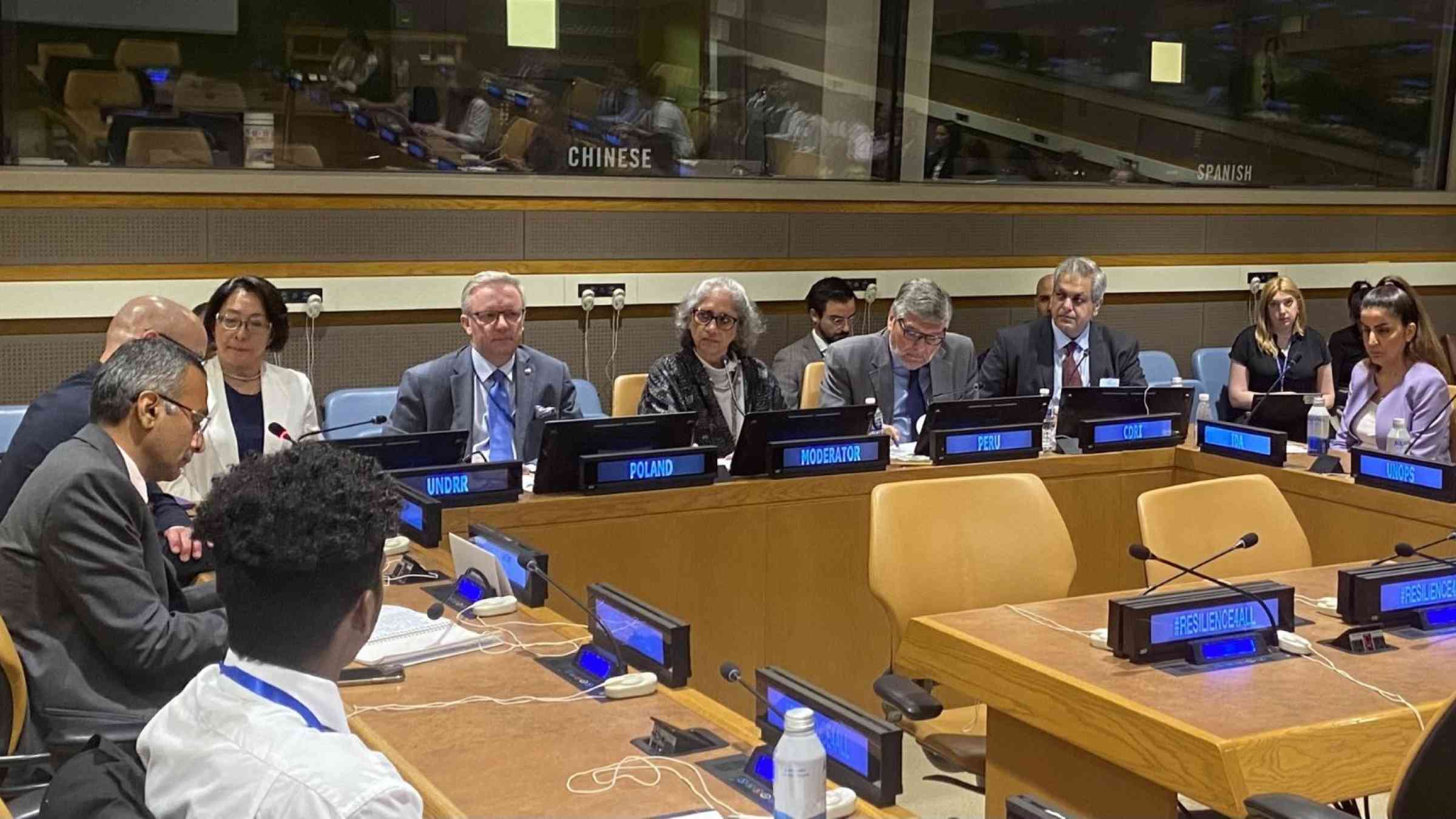HLPF side event: Infrastructure resilience - safeguarding gains in sustainable development

New York, 10 July, 2023: Infrastructure, whether grey, natural or hybrid, underpins our quality of life and social wellbeing, providing the physical facilities and services essential to business and society. Risk-proofing infrastructure is not only a part and parcel of achieving the goals of the Sendai Framework for Disaster Risk Reduction but is also fundamental for achieving SDG 9 and its target 9.1 on developing quality, reliable, sustainable and resilient infrastructure, and safeguarding development gains across the 2030 Agenda.
Progress in increasing the resilience of hard, soft and natural infrastructure has so far been insufficient. The Sendai Framework Monitor has recorded an average of 142,852 critical infrastructure units and facilities destroyed or damaged by disasters per year between 2015 and 2021. And with the rapidly increasing risks of climate change, environmental degradation, as well as far-reaching systemic hazards like the global pandemic, infrastructure is increasingly vulnerable and exposed.
Against this backdrop, UNDRR, together with the Coalition for Disaster Resilient Infrastructure (CDRI), the Co-Chairs of the Group of Friends for Disaster Risk Reduction, and the Permanent Missions of India and of Poland to the United Nations, organized the Infrastructure Resilience – safeguarding gains in sustainable development side event at the 2023 High-Level Political Forum (HLPF) on Sustainable Development, held on 10-19 July in New York, the USA.
Urgent call for increasing resilience of infrastructure
Mr. Amit Prothi, Director General, CDRI; Mr. Henk Ovink, Special Envoy for International Water Affairs, Netherlands; Mr. Anwar Baksh, Planning and Development Officer, Office of Disaster Preparedness and Management, Trinidad and Tobago; and Ms. Elham Youssefian, Advisor, International Disability Alliance discussed the need for better understand risks and their cause and the importance of devising long-term strategies to tackle infrastructure-related challenges. Ms. Mami Mizutori, Special Representative of the United Nations Secretary General for Disaster Risk Reduction, and Head of UNDRR, provided welcoming remarks, asking the international community to urgently step up its efforts with increasing resilience of infrastructure.
Ms. Mami Mizutori emphasized that “Member States issued a clear call in the Political Declaration of the Midterm Review of the Sendai Framework to ensure that infrastructure plans are aligned to disaster risk reduction strategies. This can be done by promoting multi-hazard disaster risk assessments as a prerequisite for infrastructure, housing and real estate investments in all sectors, and also by stress-testing critical infrastructure systems.”
Investing in nature-based solutions for the benefit of all
The panel deliberated on the opportunities and strategies to enhance investments in quality, reliable, sustainable and resilient infrastructure in a manner that puts people in the centre and which relies both on local knowledge and innovation. Good practices related to grey and green/blue infrastructure, including nature-based solutions, were presented.
Mr. Henk Ovink, Special Envoy for International Water Affairs, Kingdom of the Netherlands spoke on water as a leverage for sustainable actions by and for all, saying that “Water empowers people and institutions; it helps to better capacitate us for the many and ever-increasing and challenging tasks (…). Nature-based Solutions (NbS) are a cost-effective way to build infrastructure resilient to a changing climate, while also delivering other societal benefits. Investing in nature must be an integral part of sustainable development, now more than ever.”
Working together to enhance infrastructure resilience
Global initiatives such as The Political Declaration of the Midterm Review of the Sendai Framework (A/RES/77/289) adopted in May 2023, The General Assembly Resolution on Building global resilience and promoting sustainable development through regional and interregional infrastructure connectivity (A/RES/77/282) adopted in April 2023, and the recently established G20 Disaster Risk Reduction Working Group, were mentioned as successful collaborative efforts that assist in furthering the resilient infrastructure agenda.
Other examples of specific initiatives included CDRI’s launch of the Infrastructure for Resilient Island States (IRIS) at the World Leaders Summit at COP26, which is a dedicated initiative to achieve sustainable development in SIDS through a systematic approach towards resilient, sustainable and inclusive infrastructure. New resources have also been made available to countries and other stakeholders, such as the Real Estate Resilience Tool, launched by UNDRR and the International Real Estate Federation (FIABCI) in December 2022, and the Handbook for Implementing the Principles of Resilient Infrastructure, released by UNDRR in March 2023. Mr. Anwar Baksh shared Trinidad and Tobago’s experience with implementing the Principles for Resilient Infrastructure and stress testing for enhancing infrastructure resilience.
The side event was moderated by Ms. Ligia Noronha, Assistant Secretary-General and Head of the United Nations Environment Programme (UNEP) New York Office. The session was also joined by H.E. Mr. Krzysztof Szczerski, Permanent Representative of Poland to the UN, H.E. Mr. Luis Ugarelli, Deputy Permanent Representative of Peru to the UN and Co-Chair of the Group of Friends of Disaster Risk Reduction, H.E. Mr. Ravindra Raguttahalli, Deputy Permanent Representative of India to the UN, and Ms. Dalila Gonçalves, Regional Director for Africa, UN Office for Project Services (UNOPS), all sharing valuable perspectives towards increased resilience of infrastructure and societal development.